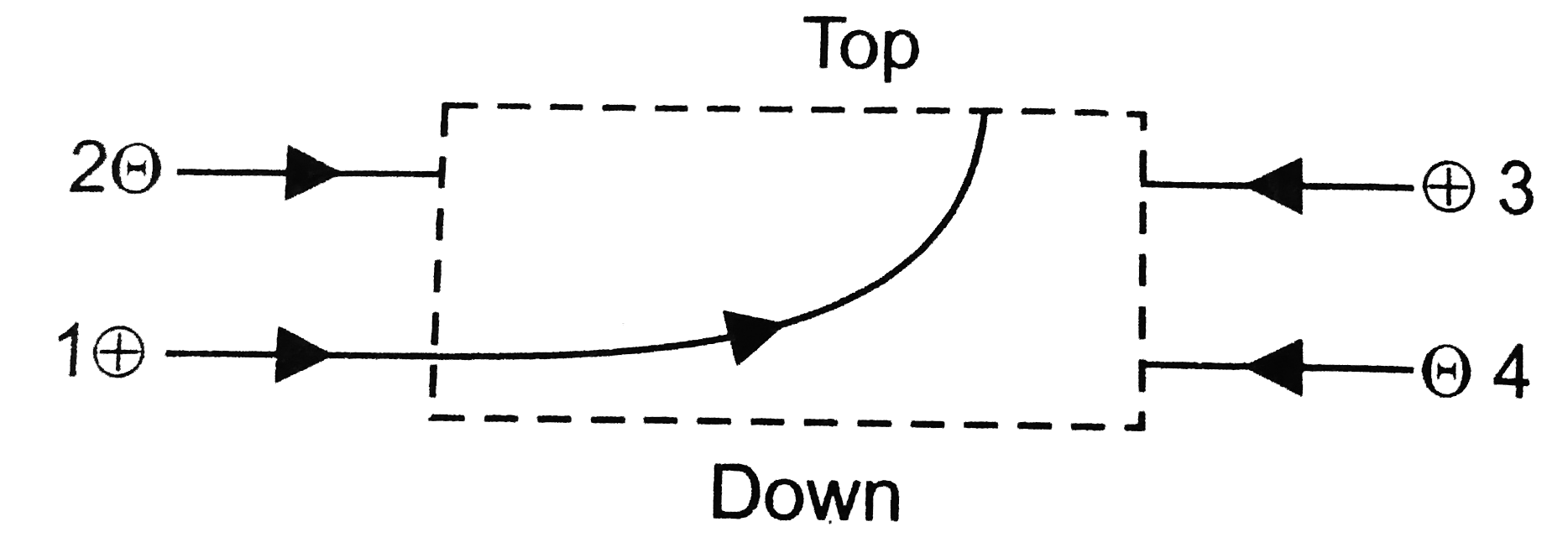A water particle of mass 10.0 mg and having a charge of stays suspended in a room. What is the magnitude of electric field in the room ? What is its direction?
To solve the problem, we need to find the magnitude of the electric field in the room that allows a water particle to remain suspended. The forces acting on the water particle are the gravitational force acting downward and the electrostatic force acting upward.
1. Convert the mass of the water particle to kilograms:
The mass of the water particle is given as 10.0 mg. To convert this to kilograms:
Mass (m)=10.0mg=10.0×10−3g=10.0×10−6kg=1.0×10−5kg
2. Calculate the gravitational force (Fg):
The gravitational force can be calculated using the formula:
Fg=m⋅g
where g is the acceleration due to gravity (approximately 9.8m/s2).
Fg=(1.0×10−5kg)⋅(9.8m/s2)=9.8×10−5N
3. Set up the equation for electrostatic force (Fe):
The electrostatic force acting on the charged particle can be expressed as:
Fe=Q⋅E
where Q is the charge of the particle and E is the electric field strength.
4. Equate the gravitational force and electrostatic force:
Since the particle is suspended, the electrostatic force must equal the gravitational force:
Fe=Fg
Therefore,
Q⋅E=m⋅g
5. Rearranging to find the electric field (E):
E=FgQ=m⋅gQ
6. Substituting the values:
Given:
- m=1.0×10−5kg
- g=9.8m/s2
- Q=1.5×10−6C
Substituting these values into the equation:
E=(1.0×10−5kg)⋅(9.8m/s2)1.5×10−6C
E=9.8×10−5N1.5×10−6C=65.33N/C
7. Conclusion about the direction of the electric field:
Since the gravitational force acts downward, the electric field must act upward to balance this force. Therefore, the direction of the electric field is upward.
Final Answer:
- Magnitude of Electric Field (E): 65.33N/C
- Direction of Electric Field: Upward
The mass of the water particle is given as 10.0 mg. To convert this to kilograms:
Mass (m)=10.0mg=10.0×10−3g=10.0×10−6kg=1.0×10−5kg
The gravitational force can be calculated using the formula:
Fg=m⋅g
where g is the acceleration due to gravity (approximately 9.8m/s2).
Fg=(1.0×10−5kg)⋅(9.8m/s2)=9.8×10−5N
The electrostatic force acting on the charged particle can be expressed as:
Fe=Q⋅E
where Q is the charge of the particle and E is the electric field strength.
Since the particle is suspended, the electrostatic force must equal the gravitational force:
Fe=Fg
Therefore,
Q⋅E=m⋅g
E=FgQ=m⋅gQ
Given:
- m=1.0×10−5kg
- g=9.8m/s2
- Q=1.5×10−6C
E=(1.0×10−5kg)⋅(9.8m/s2)1.5×10−6C
E=9.8×10−5N1.5×10−6C=65.33N/C
Since the gravitational force acts downward, the electric field must act upward to balance this force. Therefore, the direction of the electric field is upward.
- Magnitude of Electric Field (E): 65.33N/C
- Direction of Electric Field: Upward
Topper's Solved these Questions
- BOOK - HC VERMA ENGLISHCHAPTER - ELECTRIC FIELD AND POTENTIALEXERCISE - question for short answer14videos
ELECTRIC FIELD AND POTENTIAL
- BOOK - HC VERMA ENGLISHCHAPTER - ELECTRIC FIELD AND POTENTIALEXERCISE - Objective 19videos
ELECTRIC FIELD AND POTENTIAL
- BOOK - HC VERMA ENGLISHCHAPTER - ELECTRIC FIELD AND POTENTIALEXERCISE - worked out Examples19videos
ELECTRIC FIELD AND POTENTIAL
- BOOK - HC VERMA ENGLISHCHAPTER - ELECTRIC CURRENT THROUGH GASESEXERCISE - Short answer6videos
ELECTRIC CURRENT THROUGH GASES
- BOOK - HC VERMA ENGLISHCHAPTER - ELECTROMAGNETIC INDUCTIONEXERCISE - Questions for short answer9videos
ELECTROMAGNETIC INDUCTION
Similar Questions
A Point charge produces an electric field in room. What is its direction?
View Solution1020 electrons, each having a charge of 1.6×10−19C, pass from a point A towards another point B in 0.1 s. What is the current in ampere ? What is its direction ?
View SolutionThe electric force experienced by a charge of 1.0xx10^(-6) C is 1.5 xx 10^(-3) N . Find the magnitude of the electric field at the position of the chaerge.
View SolutionA pendulum bob of mass 80mg and carrying a charge of 2×10−8C is at rest in a uniform, horizontal electric field of 20k Vm−1. Find the tension in the thread.
View SolutionA uniform magnetic field of magnitude 0.20 T exists in space from east to west what speed should a particle of mass 0.010 g and having a charge 1.0X10−5C be projected from south to north so that it moves with a uniform velocity?
View SolutionThe electrons in a particle beam each have a kinetic energy of 1.6×10−17J. What are the magnitude and direction of the electric field that stops these electrons in a distance of 10.0cm
View SolutionA particle of mass 40 mg and carrying a charge 5×10−9C is moving directly towards a fixed positive point charge on magnitude 10−8C. When it is at a distance of 10 cm from the fixed positive point charge it has a velocity of 50cms−1 at what distance from the fixed point charge will the particle come momentarily to rest ? Is the acceleration constant during motion?
View SolutionA particle of mass 1 g and charge 2.5×10−4C is released from rest in an electric field of 1.2×104NC−1 (a) Find the electric force and the force of gravity acting on this particle. Can one of these forces be neglected in comparison with the other for approximate analysis? (b) How long will it take for the particle to travel a distance of 40 cm? (c) What will be the speed of the particle after travelling this destance? (d) how much is the work done by electric force on the particle during this period?
View SolutionAn oil drop, carrying six electronic charges and having a mass of 1.6×10−12g, falls with some terminal velocity in a medium. What magnitude of vertical electric field is required to make the drop move upward with the same speed as it was formerly moving down ward with ? Ignore buoyancy.
View SolutionThe figure shows the path of a positively charged particle 1 through a rectangualr region of unifrom electric field as shown in the figure. What is the direction of electric field and the direction of deflection of particles 2,3 and 4 ?
 View Solution
View Solution

